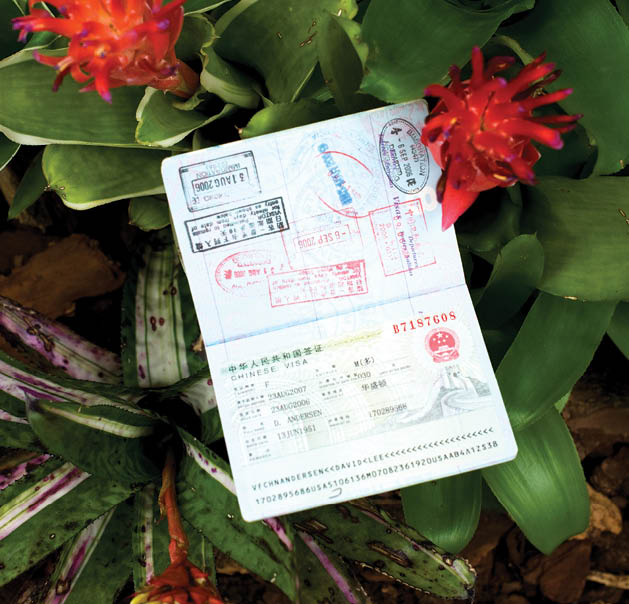David Andersen has heard people say, “Your life story would make a great movie.” It’s a short way of saying that this Maple Grove resident and architect has had his fair share of globe-trotting adventures, and took the crooked path to get there.
The born-and-raised Iowa boy learned to love travel, thanks to road trips with his family. He once dabbled in journalism and took a stab at being a cowboy before settling into architecture. Andersen is now known as a leading architect in eco-tourism with projects in Costa Rica, Vietnam, Nigeria, Minnesota and many other locations. This reputation is thanks to a few happy accidents more than 30 years ago, when Andersen began his business in Minnesota.
Sometime in the ‘80s, Andersen was at a fundraiser for then-senator Rudy Boschwitz after having started his own architecture firm, Andersen by Design LLC. The two had a short conversation about starting businesses in Minnesota, and Boschwitz asked for Andersen’s business card. A week later, Andersen got a phone call from one of Boschwitz’s staff members in Washington, saying he’d heard Andersen was an expert in international hotel design. “Which I wasn’t,” Andersen says. “So I lied and said I was.”
From there, Andersen got connected to a project in Grenada, just before the United States invaded the island to restore a pre-revolutionary government. Once the U.S.-led coup succeeded, Andersen’s client, developer Ken Milne, left the project and sold his land, bought property in Costa Rica, and invited Andersen to come along to be his architect. Andersen describes it as fun and a good change from the mainstream projects in the states. He thought it would be his first and last project in Costa Rica.

About a year later, after returning home, he got a call from a friend about a Minnesota couple who wanted to start a project in tropical Costa Rica. The couple was John and Karen Lewis. They called, saying, “‘I understand you’re an expert in Costa Rica,’” Andersen says, “and I’m like, ‘Yeah, okay, sure.’” His acceptance of the exaggerated use of “expert” landed him the job building an eco-tourism lodge in Costa Rica before the word “eco-tourism” came into vogue. “I didn’t realize that I was building the first eco-lodge,” Andersen says.
The lodge is called Lapa Rios, and it remains the go-to example of eco-tourism. “In the world of architecture, and in famous places in Costa Rica, it always gets mentioned,” says former colleague Steve Riedel. As an international trade representative for environmental and energy industries, Riedel traveled with Andersen to Vietnam, where Andersen gave several presentations on eco-tourism. The idea behind eco-tourism is that “if you build too many hotels in a beautiful lagoon, then the water might get spoiled from too many tourists and no one wants to go there anymore,” Riedel says. So you build in a manner that attracts tourists, but also respects the environment and contributes to the local community and economy, allowing the area’s beauty to remain intact.
But Andersen doesn’t just do eco-tourism work abroad. He created the visitor management plan for Itasca State Park in Minnesota. “That was an incredible experience because I literally got paid…to go camping at Itasca State Park,” Anderson muses. “I pretended I was an undercover researcher by acting like a tourist.”
His work in Minnesota involves extensive volunteering, too. “Even when David was traveling off U.S. soil, he actively maintained his volunteerism,” says friend and subcontractor Alana Griffith. He has been a Ronald McDonald House president for its children’s charities of the Upper Midwest, SAGE Academy board member, youth soccer coach and more. “As a professional leading other professionals, his wry wit and listening skills were very well used while serving as the chapter president for AIA Minneapolis (American Institute of Architects),” Griffith says.
Peter Hilger first worked with Andersen in 1983 and collaborates with him often. Now, teaching construction and facility management at the University of Minnesota, Hilger invites Andersen to his classroom to assist in judging student project proposals. Andersen always brings a challenge for the students, forcing them to solve proposal problems that Andersen has faced in real life. “He’s a global traveler, but he’s also extraordinarily humble,” Hilger says.
This humble architect is quick to point out that not all his work involves traveling the world building eco-lodges on mountains and spas at the bottoms of volcanoes (like Tabacon Spa in Costa Rica). “I still do ‘typical’ work, and, most recently I have been working on a couple of significant projects in Minnesota involving mixed-use, affordable housing and renovation of a historic building,” Andersen says. He also notes that his work is not always glamorous, and can sometimes be frightening. While we consider sustainability to be a good thing, not everyone agrees. “[It’s] not always welcome news in some places, like my work in Guyana…there was a reason I traveled with police or a military escort to protect me. In Nigeria, I rode in an armored Mercedes with an armed bodyguard.”

Sometimes, though, it truly is a grand adventure. Chuck Malkerson has worked with Andersen throughout the years, including on a conservation foundation to serve the Sian Ka’an Biosphere Reserve in Quintana Roo, Mexico. “This vast area…includes pristine beaches and property just prime for development,” Malkerson says. He and Andersen once attended a board meeting that was held on the beach and after the meeting walked the area most likely slated for development. “I had a sly grin on my face as I watched David crunching through the undergrowth, taking it all in, and then sitting down with the board to provide his considered guidance on the proper protocol for any development,” Malkerson says. “It was kind of like Indiana Jones as community/cultural and real estate planner/consultant.”
Andersen’s Indiana Jones tendencies have led him back to Costa Rica. This time, it’s with the Minnesota nonprofit Seeds of Change and its Forest Ecology Lab. For the past five years, the nonprofit has been bringing Twin Cities’ high school students to its labs in Costa Rica. They work there, hands-on, for a week or so with scientists from the University of Costa Rica and the University of Wisconsin. Working on genome sequencing, these students experience graduate-level projects. “For nearly all these students, it’s been a life changing event,” Andersen says.
With all the globe-trotting he’s done, Anderson confesses, “I’ve never been to Paris. I’ve never been to normal places.” But that doesn’t seem to matter, because Minnesota is still his favorite place on earth. “Of all the remarkable places I’ve had the privilege to travel, Minnesota remains my favorite,” Andersen says. “It is truly an amazing place to come home to—except maybe in late February.”









